Journeyperson Electricians and Fraud or Misrepresentation
Possession of Old Exams not Fraud
Introduction
Last year the Saskatchewan Apprenticeship and Trade Certification Commission (SATCC) cancelled or suspended the certifications of 22 electrical journeypersons over allegations that those electricians engaged in “fraud or misrepresentation” during their time in trade school. As it turned out, these allegations had to do with old examination materials that were shared amongst students via Dropbox (a cloud-based storage system) and which the students used to study. The SATCC decided to cancel or suspend the certifications of these 22 electricians for simply possessing these old exams, or having accessed them even once.
This was not a case of someone memorizing an answer key to an exam they were about to write, or one where a student copied their neighbour word-for-word while writing an official exam. These electricians used the old exams to study and prepare for an exam they did not know the contents of. They still needed the knowledge and ability to answer the questions on the exams they actually wrote, knowledge they had acquired through years of apprenticeship and study. While the act of suspending and cancelling the certificates of these journeypersons is unjustifiable, what is even more troubling is that the SATCC posted the names of these 22 electricians, the allegations against them, and the punishments administered on their website prior to giving the electricians the opportunity to challenge those allegations. This website posting was picked up by several news agencies and the contents were repeated in articles of their own. The harmless use of old exams for studying purposes was turned into an unjustifiable, full-blown attack by the SATCC on the reputations of 22 electricians.
Background
In June of 2019, the SATCC sent letters to 22 apprentice and journeyperson electricians in Saskatchewan alleging that those electricians had engaged in “fraud or misrepresentation” in the acquisition of their certifications. As a consequence, the SATCC suspended or cancelled the certifications of these 22 electricians. As it came to light, those allegations of “fraud or misrepresentation” were based upon these electricians having accessed documents that were discovered to have been saved to Dropbox and which were shared with other electricians while they were attending their schooling at Saskatchewan Polytechnic. The documents found on Dropbox included some old examinations and high-quality notes from an excellent past student (known as “Tim’s Notes”).
One electrician that had been sanctioned by the SATCC appealed the cancellation of his certification to an Appeal Committee of the SATCC but was denied his appeal, with exceedingly little substantiation as to why he was denied, due to an apparent finding that he “knew or ought to have known” that he should not have accessed the materials in question and that he “knew or ought to have known” that he should not have compromised those materials further by sharing them with others. The primary issue surrounded the student’s possession of old examinations none of which were the same exam that he wrote. The question to ask was: “did the student acquire his certification through fraudulent misrepresentation by studying from old examination material?”
The student appealed the decision of the Appeal Committee to a judge of the Court of Queen’s Bench. Upon reviewing the matter, Mr. Justice Scherman overturned the Appeal Committee’s decision and provided his legal and judicial insight on, among other things, the allegations of “fraud or misrepresentation” that were made against the student and how the charge against him was inappropriate.[1]
Fraudulent Misrepresentation
Justice Scherman held that the Commission was required to prove actual intent by the student to engage in fraudulent misrepresentation. Neither innocent nor negligent representations were sufficient. “Fraud or misrepresentation” or “fraudulent misrepresentation”, which he uses interchangeably, is defined in the decision as “a false statement, made either known to be false or made without knowing or caring whether it is true or false, that is intended to induce a party to detrimentally rely on it”.[2] Justice Scherman found that the accessing of examination materials that did not contain the exam that the student actually wrote was not fraudulent misrepresentation (and neither was the sharing of such materials with others).[3] The materials in question were old examinations that were no longer being used and use of such old examinations simply does not fit into the legal landscape of fraud (or fraudulent misrepresentation).
In fact, by way of example, the University of Saskatchewan makes old examinations available to students and encourages them to use those exams to study. The Arts and Science Students Union states on their webpage that “[t]he ASSU offers a wide variety of past midterm and final exams in various subjects as study aids for students. For all exam file requests, stop by the ASSU office (Arts 218) to gain access to these great study tools”.[4] The Department of Physics and Engineering Physics even posts their old examinations online including the solutions to those questions.[5] These are only two examples, but many more are available for those inclined to look for them.
Justice Scherman clearly rejected the SATCC’s position on their interpretation of “fraud or misrepresentation” and stated that “[i]n the absence of a factual finding that [the student] wrote the exam he did with knowledge of the questions that were on the exam, it is simply not possible to make a logical argument that [the student] misrepresented his knowledge because he knew the questions in advance. When he wrote the exam, he was not misrepresenting the knowledge he had”.[6] That is, the student was not guilty of “fraud or misrepresentation” because he did not have the actual exam questions in advance. He merely had old exams for studying purposes.
Most succinctly, Justice Scherman summarizes his findings on the issue of fraudulent misrepresentation as follows:
[45] The Appeal Committee was not given the power to suspend certificates because they found [the student] was guilty of some form of academic dishonesty. Proof of a fraud or fraudulent misrepresentation was required. To find fraud, the Appeal Committee would have had to have before it evidence of, and a finding of, actual knowledge on the part of [the student] that what he was doing was wrong or prohibited. A finding that he ought to have known does not constitute fraud.[7]
The Appeal Committee had erroneously decided that [the student] “ought to have known” that what he was doing was wrong or prohibited, to use the words of Justice Scherman, and this error constituted an error of law sufficient to invalidate their decision. Justice Scherman therefore quashed their decision and, in effect, overturned the sanctions against the student, allowing him to return to work as a journeyperson electrician.
Failure to Provide Sufficient Reasons
While this student was successful in his appeal on the grounds that the Appeal Committee erred in law by finding him guilty of fraud or misrepresentation, Justice Scherman also provided commentary on the Appeal Committee’s failure to provide sufficient reasons for judgment in the hope that it would assist the SATCC and any appeal committees in the future.
All decision-making bodies are required to provide sufficient reasons for judgment and there is significant rationale upon which this requirement is based:
- The mere process of writing sufficient reasons ensures that the issues being explored and the rationale being offered will be more well articulated and well thought out.
- Reasons assure the parties that their representations and positions have been considered and weighed in rendering the decision.
- If an appeal from a decision becomes necessary, sufficient written reasons provide the basis upon which a party can effectuate a meaningful right of appeal because they will be able to identify what it was the decision-maker decided and on what grounds. The written decision being appealed is the most crucial document to be considered, and argued about, on an appeal because it is that written decision that is being challenged for alleged errors made by the decision-maker.
- Reasons, particularly in a regulated industry, as this case was since it dealt with journeyperson electricians, allow for other regulated persons (in this case electricians in Saskatchewan) to understand what is required of them and what the standards will be for assessing their actions.[8]
Justice Scherman found that, because the Appeal Committee’s decision provided no discussion whatsoever of how they interpreted “fraud or misrepresentation”, which was the core question to be answered in the case, the Appeal Committee lost jurisdiction due to their failure to provide adequate reasons. Justice Scherman further found that the Appeal Committee provided only a conclusion that the student knew or ought to have known that he should not have accessed the Dropbox without any explanation as to what their reasons were for deciding in that way. As a consequence, Justice Scherman quashed the Appeal Committee’s decision.
Reasonable Apprehension of Bias
As with the issue of sufficiency of reasons, Justice Scherman provided guidance to the SATCC and their future Appeal Committees respecting issues surrounding the reasonable apprehension of bias of the decision-makers. The law requires that a decision-maker sitting on a case disqualify itself if “a reasonable and rightminded person, informed of the relevant facts and having thought the matter through, would think it more likely than not that the decision-maker, whether consciously or unconsciously, would not decide fairly”.[9]
The issue of bias in this case arose over information that was provided to members of the Appeal Committee presiding over the student’s appeal, including a briefing that was provided to them by the investigators hired by the SATCC. Decision-makers are not to be given information about a case prior to hearing that case because it could affect their perception before the parties have had a fair opportunity to present their evidence and arguments. As Justice Scherman points out, “[a]n appeal committee is to be deciding the appeal only on the basis of the evidence presented to it at the de novo hearing”.10 (Note: “de novo” is latin for “from the beginning” and is used to identify when an “appeal” is to be more like a trial requiring proof of all allegations, including the tendering of evidence to support those allegations, rather than how we normally think of appeals as arguments on the law only).
Decision-makers need to enter hearings/appeals/trials with open minds, untainted by one-sided information that they may have acquired outside of the rules of evidence and without the opportunity for the opposing party to challenge that information. This was important to communicate to the SATCC, given the amount of information that was presented to the Appeal Committee prior to the student having had the opportunity to have his matter heard by them. The risk for the student was that the decision-makers may have already made up their minds on his guilt prior to giving him the opportunity to plead his case.
Closing
Those who have attended post-secondary schooling are likely familiar with the common practice of studying from old examination material. The sanctions issued by the SATCC may therefore have come as a surprise. Studying off of old exams still requires one to learn the material, understand how to solve the problems, and to generally grasp the material in a manner that allows them to recall that information and apply it in a test environment such that they can come up with the correct answer. Having old examination material does not make you a fraud.
This is an important win for tradespeople in this province. Fraud is one of the most serious civil allegations that can be made against someone and therefore should not be alleged lightly. These allegations by the SATCC were a serious attack on the abilities, ethics, and reputations of 22 electricians simply for having old materials for studying purposes.
This case is a good example of a circumstance where seeking legal advice can have a profound impact. The legal aspects of this case were quite technical so having skilled and experienced counsel can be of great assistance in navigating such matters.
[1] Remy Walter Norman Thibeault v The Saskatchewan Apprenticeship and Trade Certification Commission and Appeal Committee of the Saskatchewan Apprenticeship and Trade Certification Commission, 2020 SKQB 192 [Thibeault]
[2] Ibid at para 32
[3] Ibid at para 36
[4] https://assu.usask.ca/services/exam-files.php
[5] https://artsandscience.usask.ca/physics/undergraduates/115-and-117/common-resources.php#Resources
[6] Supra note 1 at para 38
[7] Supra note 1 at para 45
[8] See: Via Rail Canada Inc. v National Transportation Agency (2000), [2001] 2 FC 25 [Via Rail] at para 17
[9] Supra, note 1 at para 54
[10] Supra, note 1 at para 56
Disclaimer: The content of this article is not intended to be legal advice. What is, and what is not, permissible is subject to the rules, codes, policies, and legislation applicable to the particular circumstances of each case and all rules, codes, policies, and legislation are subject to change at any time. If you are facing allegations by a regulatory body or educational institution you should contact a lawyer for advice.




